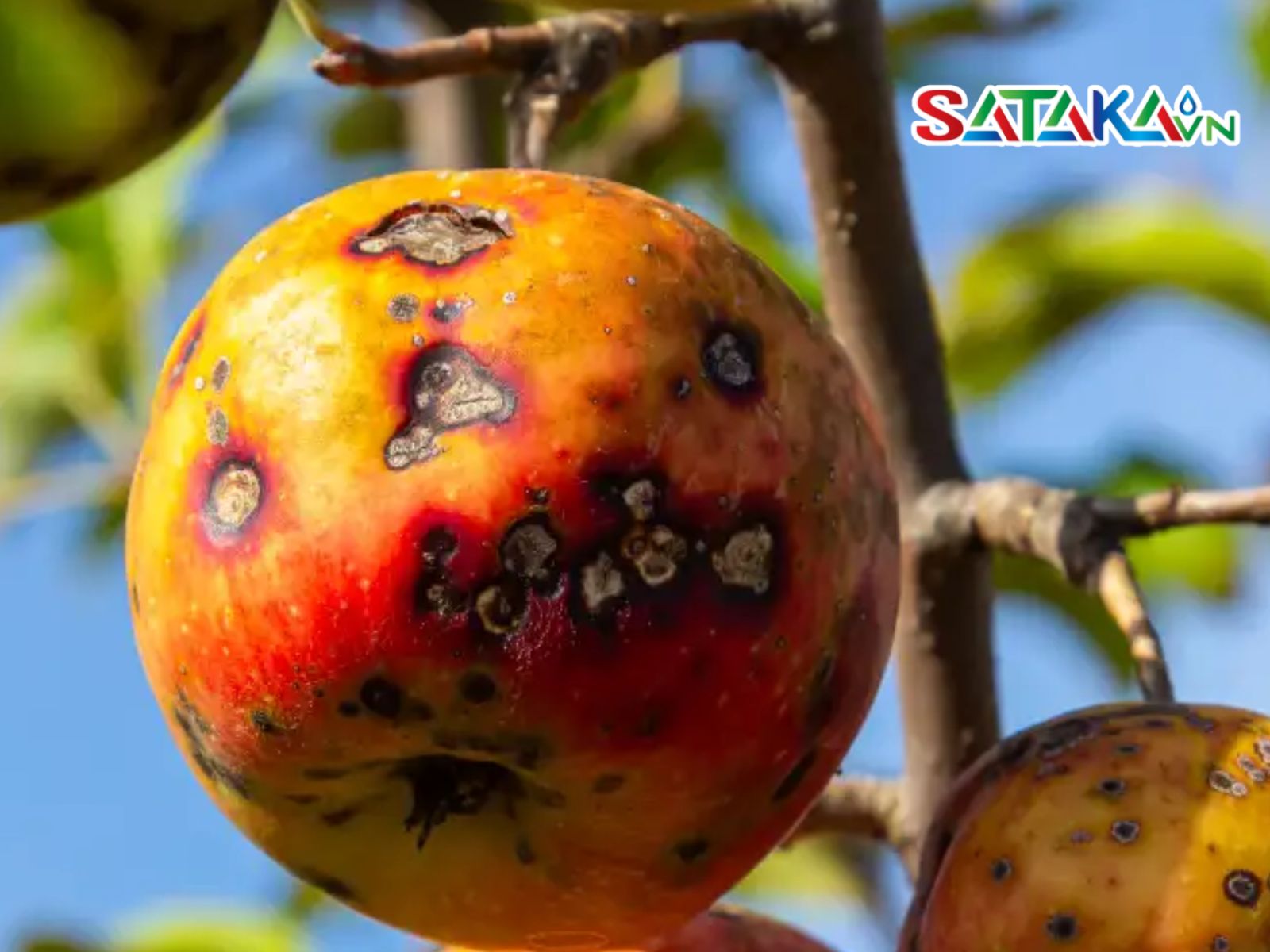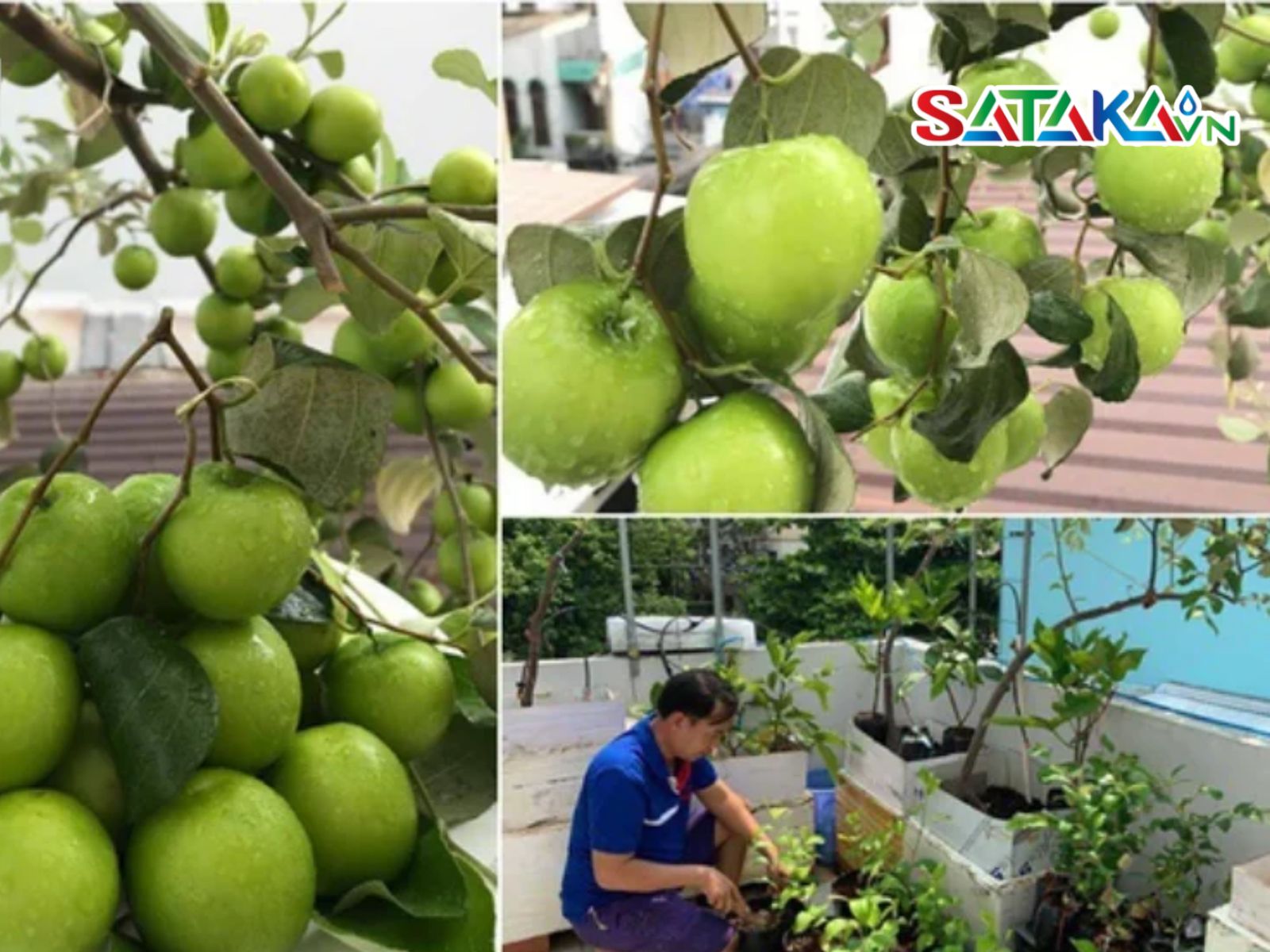Apple anthracnose is a fungal disease that causes fruit rot, defoliation, reduced yield and quality, severely impacting orchardists' income.
Currently, farmers frequently face many types of pests and diseases, among which apple anthracnose is one of the most serious threats. This disease not only reduces productivity but also greatly affects fruit quality, thereby directly impacting farmers' income. Understanding its causes, symptoms, and effective prevention and treatment measures will help us protect healthy apple orchards, ensuring abundant harvests and high commercial value.
Apple anthracnose is a dangerous fungal disease that easily erupts in hot, humid, and rainy weather conditions. The disease damages leaves, stems, and fruits, causing deformed, easily spoiled apples, and reducing their commercial value. If not handled promptly, it can lead to a complete loss of the entire season's crop. Therefore, early identification and prevention are the best ways for farmers to protect yield and maintain healthy apple orchards.
Explore: Rose Anthracnose: Identification and Prevention
Apple anthracnose is primarily caused by two types of fungi: Gloeosporium psidii and Glomerella psidii. These fungi thrive in humid conditions, especially when the trees are producing young shoots or bearing young fruit, which is the stage when the trees are weakest and most vulnerable.
The risk of apple anthracnose infection increases if the garden is poorly drained, experiences heavy rainfall, or dense fog. The fungi can silently exist in the soil, on old plant residues, and "resurge" when conditions are favorable. Fungal spores spread through rainwater, irrigation water, or are carried by the wind, making disease control complex if farmers do not detect it early.

What Causes Apple Anthracnose?
One of the early signs of apple anthracnose is abnormal leaf discoloration, turning yellow or dark red, accompanied by shedding, curling, and deformation. On the stem and branches, cracks may appear at the branch collar or base – where the fungi easily penetrate.
When the disease is severe, branches dry out, young leaves drop en masse, and fungal patches may appear if humidity is high. Diseased apples are often deformed, have black or brown spots, are rough, and drop prematurely, reducing production and commercial value.
Apple anthracnose not only harms individual trees but also threatens the entire season's crop if not prevented and treated promptly. Below are typical harms:

Harm Caused by Apple Anthracnose
Here are effective and easy-to-apply guidelines:
1. Choose reputable varieties and seedling sources
2. Proper cultivation techniques
3. Manage planting soil and surrounding environment
4. Timely inspection and treatment of diseased trees
5. Enhance tree resistance

Measures to Prevent and Control Apple Anthracnose
Apple anthracnose not only affects the growth process but also causes severe losses in yield and profit. However, with the right understanding and timely prevention and treatment measures, farmers can completely control and effectively protect their apple orchards. Thank you for following the article, wishing you always bountiful apple harvests!
SATAKA VIETNAM JOINT STOCK COMPANY
Address: No. 246 Nguyen Kim Cuong, Tan Thanh Dong Commune, Cu Chi District, Ho Chi Minh City
Hotline: 0856.555.585 or 0789.917.927
Website: https://sataka.com.vn/